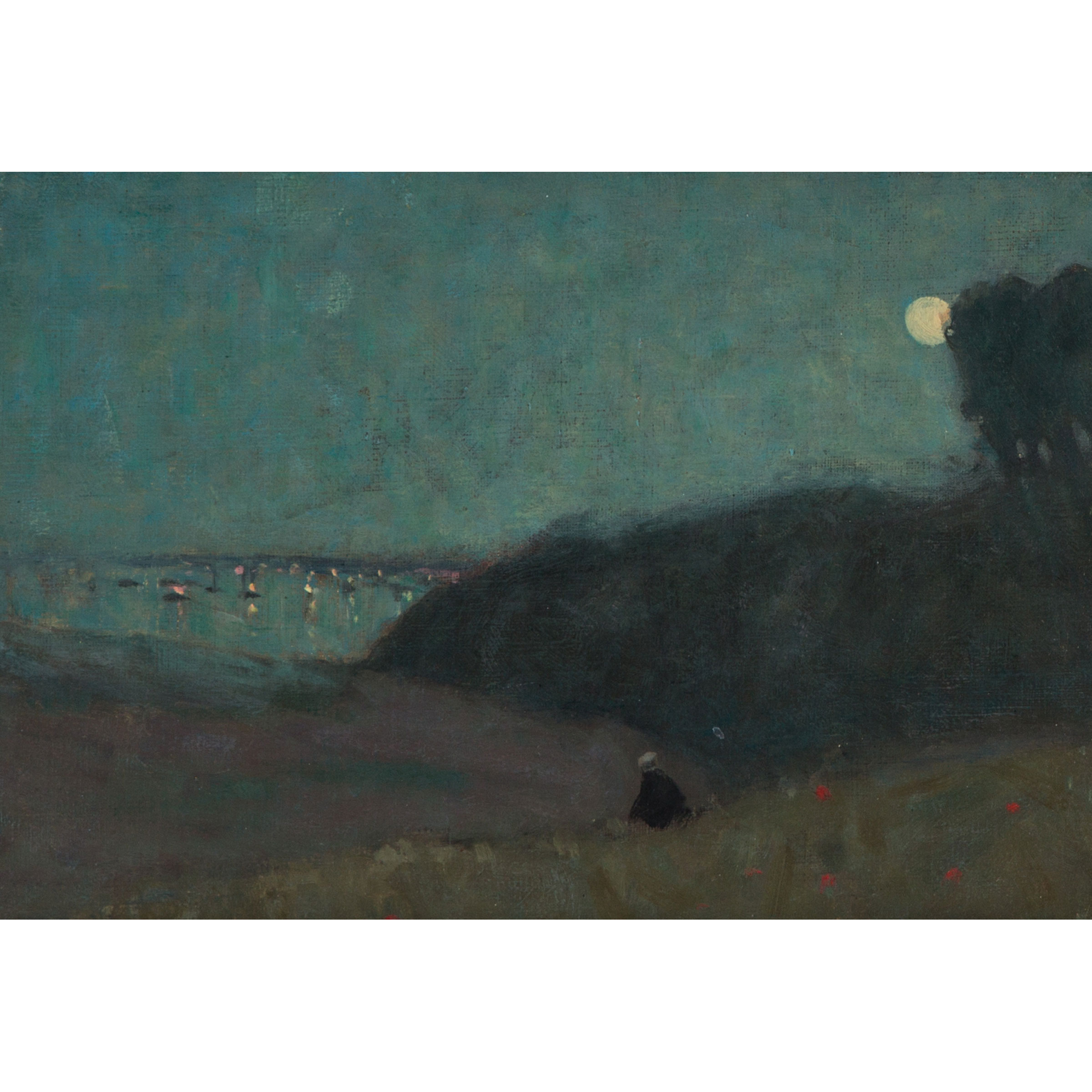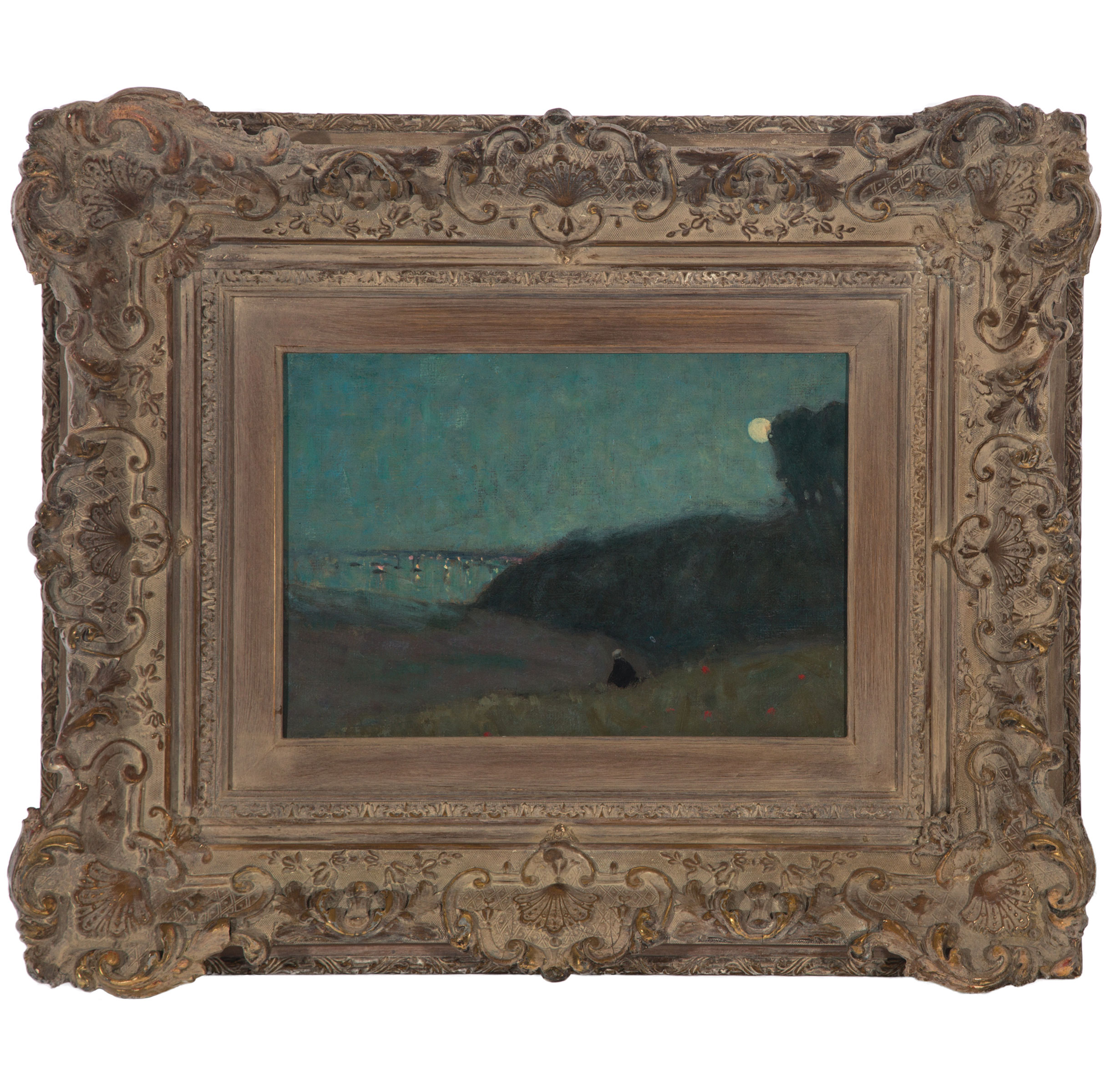Lot 53
JAMES WILSON MORRICE, R.C.A.

Additional Images

Provenance:
Collection of the artist’s brother (Robert Morrice)
Gift to Florence Pitfield, Montreal
By descent in the family, Ontario
Sotheby’s (Canada), May 2005, Lot 189
Private Collection, Toronto
Note:
A full moon shines brightly over a velvety green landscape, its light reflected by the body of water in the middle distance. The sea in turn is animated by a cluster of bobbing boats. Of these vessels Morrice expert, Lucie Dorais, observes: “Their sails are still set. The fleet has just returned.” While close to us, on a path leading to the water’s edge, a woman waits.
Madame Dorais notes that sentimental themes such as this were quite popular at the turn of the 20th century, although somewhat more rare for Morrice. Nonetheless, by leaving the figure of the woman de-emphasized, Morrice draws our attention to his real interest: the sailboats. Madame Dorais writes: “Sailboats had fascinated Morrice since his childhood, and we find them, in a variety of sizes and shapes, in about 10% of his landscapes, from his earliest Maine watercolours to his last Sicilian sketch.”
Around 1903-1904,Morrice did a series of the famous Regatta of Saint-Malo which is how this work had been interpreted by Madame Dorais when she first saw it in 2005. At that time she had dated it circa 1898-99. Madame Dorais notes: “Not long after, I found a drawing for that landscape in one of the artist's sketchbooks; no girl and no moon, so the "story" was built later in the studio. That sketchbook was mostly used in Paris and Dieppe, but a few pages are clearly from Cancale, a small town in Brittany not far from Saint-Malo. Morrice did spend part of the 1896 summer there, but this sketchbook dates from 1892-93 (Sketchbook #4, Montreal Museum of Fine Arts, Dr.1973.27) and does not contain any views of Saint-Malo. It seems, then, that Morrice went only to Cancale.”
Madame Dorais further explains: “The drawing related to this painting is found on page 78 of the sketchbook. Morrice’s vantage point here in Cancale is from the "Sentier des Douaniers", clearly visible on the right. He has left the busy town, passed the main jetty and its lighthouse, and gone around the "Pointe du Hock", to look down at the beach of the same name. The tide is high, the boats are idle; very few sails are up, and no specific activity is hinted at. In the painting, the numerous sails revealed by the moonlight hint at some activity. Cancale's fishing boats, the "bisquines", were so famous that regattas were organized every summer for the tourists, but in Saint-Malo, not locally. Therefore, this cannot be a regatta as previously thought because the location is not Saint-Malo.
The boats shown here were used to harvest the town's treasure, the flat oysters naturally growing off the coast.To make the harvesting sustainable, it was reduced to a short period of just two weeks, around Easter. Every morning, 200 boats departed with the outgoing tide to drag the natural beds, and returned at night to dump their catch onto the man-made "oyster beds" near the quay. Women and children would sort them at low tide, removing the empty shells. Madame Dorais concludes: “This is more likely what is happening here: the fishing fleet, with the woman’s lover on board, is returning to Cancale under the full moon.The style of the painting, with its small dose of Victorian sentimentality, recalls the English paintings that Morrice had seen in Montreal and in England, where he spent a few months (perhaps to study) in 1891, not long before his visit to Cancale. To find such an accomplished painting so early in Morrice's career is remarkable.“



